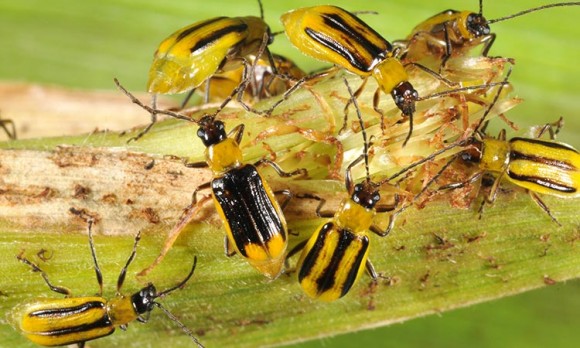Wild plants secrete compounds that would help to avoid using pesticides and fertilizers
A work by CSIC and CREAF scientists highlights that wild plants are more fertile and more resistant to pests than traditional crop varieties because their roots release substances that help them to capture more nutrients and fight pathogenic bacteria and fungi in the soil. If these natural properties were transferred to conventional cultivated varieties, agricultural yield could be improved and the ecological impacts of pesticides and industrial fertilizers reduced.

Since the 1970s, the United Nations talks about food security – that is, providing enough food to all humans worldwide - and the challenge it poses. One of the pieces that would help achieve it would be to improve agriculture, making it both more productive and environmentally friendly.
Along these lines, a study published in the Trends in Plants Science magazine puts the roots of plants in the spotlight. As the CREAF ecologist Catherine Preece and the CSIC professor at CREAF Josep Peñuelas point out, exudates from the roots of wild varieties could improve soil fertility and make crops more resistant to pests, since they secrete these substances into greater quantity than the varieties used for cultivation. These exudates that release the roots become part of the underground world of the plant, the rhizosphere.
Among the exudate compounds there are sugars, organic acids and other metabolites, which can act as a repellent against pathogens or attract beneficial bacteria, such as nitrogen-fixing bacteria that help legumes grow. Others improve the availability of some nutrients such as the match", explains Dr. Preece.
"Among the exudate compounds there are sugars, organic acids and other metabolites, which can act as a repellent against pathogens or attract beneficial bacteria, such as nitrogen-fixing bacteria that help legumes grow. Others improve the availability of some nutrients such as the match", explains Dra. Preece. In the case of the varieties that we use to cultivate, "after years of artificial selection, exudates have lost some of these properties that wild plants do conserve", he adds.
"If by cross-breeding or genetic techniques we can make current varieties to recover the ability to synthesize some exudates in the fields, we would improve productivity and avoid fertilizers and pesticides", remarks Josep Peñuelas. Until now, some genetic characteristics of wild plants have been used to improve productivity or increase fertility of crops, such as sunflowers, wheat and potatoes. On the other hand, very few programs, if any, have incorporated characteristics associated with root exudation, a key point that would bring us closer to food security.
Wild plants are bitter, but resistant to predators
The review carried out by the scientific team argues that exudates can improve resistance to pests. As a matter of fact, current crops have less resistance to herbivore attacks than their wild ancestors, because direct selection has caused them to lose properties that protect the plant, but are undesirable for human consumption, such as bitter taste, toxicity, hardness or hairiness.

An interesting case is corn, which is often eaten by the larva of Diabrotica virgifera virgifera beetle. The predecessor of the current corn crops, the teosinte (Zea mays subs. Parviglumis), and the European varieties, produce and emit substances called sesquiterpenes in the roots, which attract a nematode that feeds on the larva of the beetle. In contrast, the American varieties, which are the ones we crop and consume the most, have stopped synthesizing sesquiterpenes. Incorporating again in the plants the ability to release these compounds, would improve greatly productivity and the pesticide use would reduce.
On the other hand, contemporary intensive farming systems use very high levels of fertilizers to counteract the deficits in nitrogen, phosphorus or other soil nutrients necessary for the plant. Several studies have revealed that wild species make better use of nutrients from the soil, since among the substances secreted by the roots are enzymes specialized in mobilizing minerals or in capturing iron, an element that is often scarce. In addition, root exudates also have an important role in promoting positive interactions with microorganisms, such as to initiate a collaboration with fungi and lead to so-called mycorrhizae.
The largest study conducted in this area was done with 27 crop species and their wild relatives, and concludes that the treated fields benefit from mycorrhizae only when there is a phosphorus limitation, unlike the wild ancestors that always take advantage of it, regardless of the availability.
Referenced article:
Catherine Preece and Josep Peñuelas (2019). A Return to the Wild: Root Exudates and Food Security. Trends in Plant Science. https://doi.org/10.1016/j.tplants.2019.09.010







